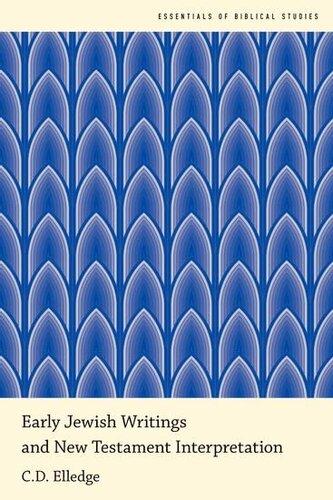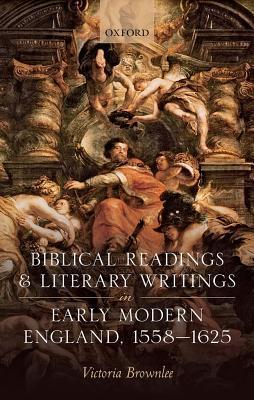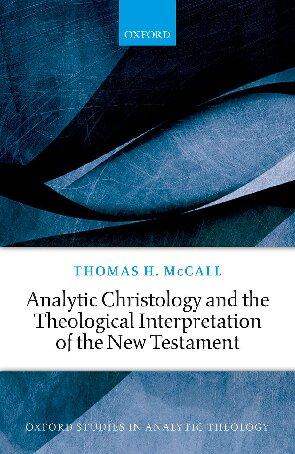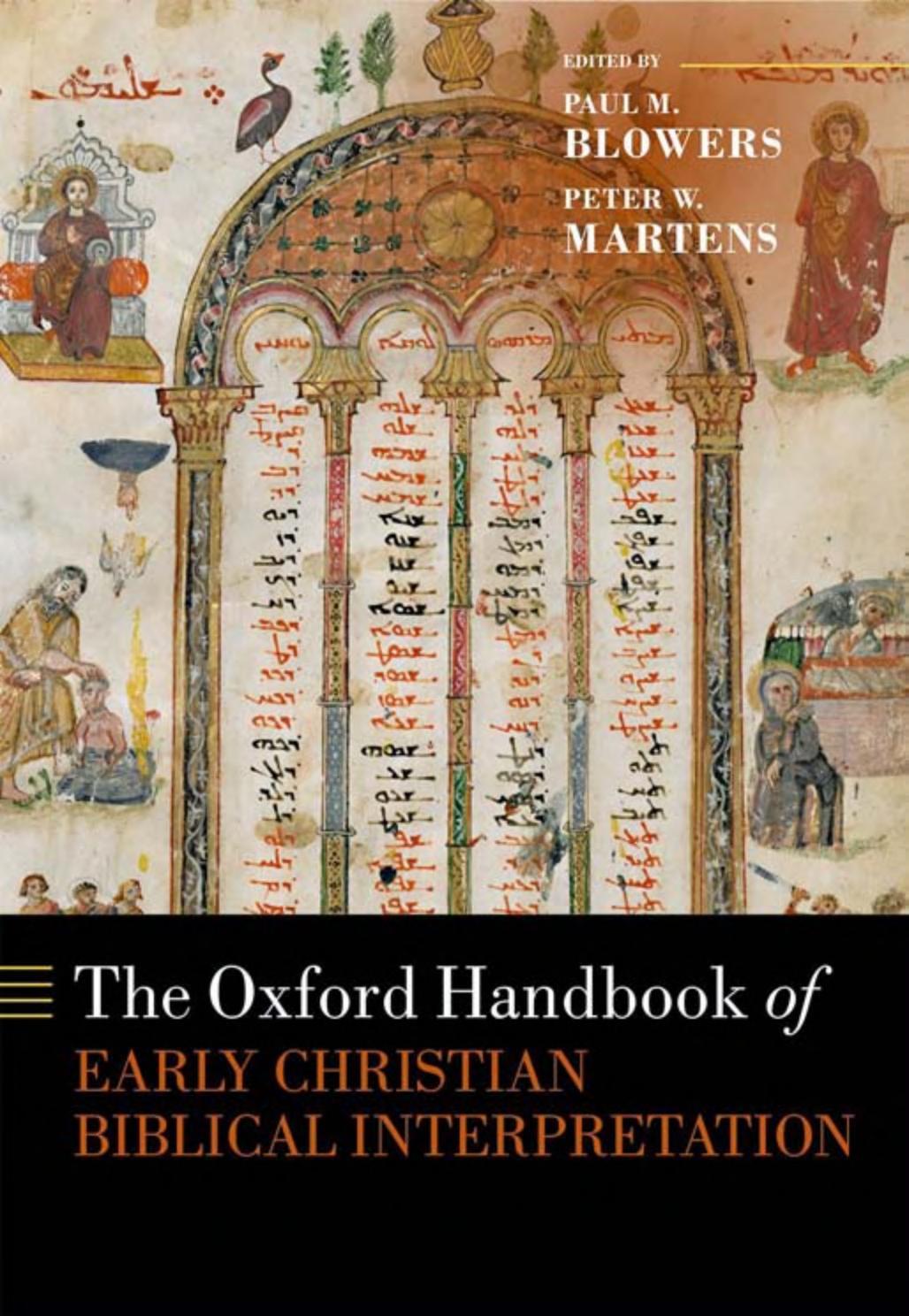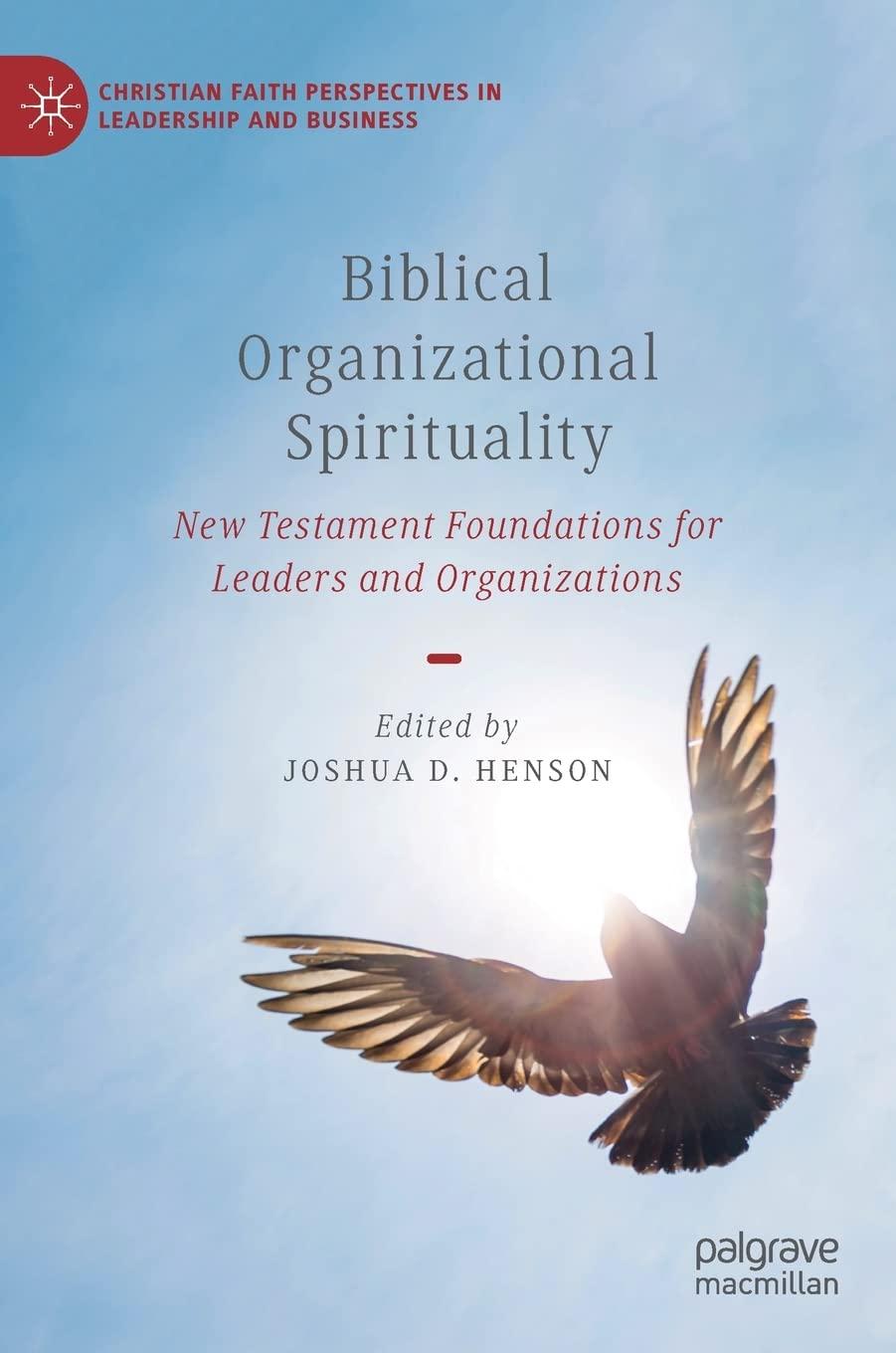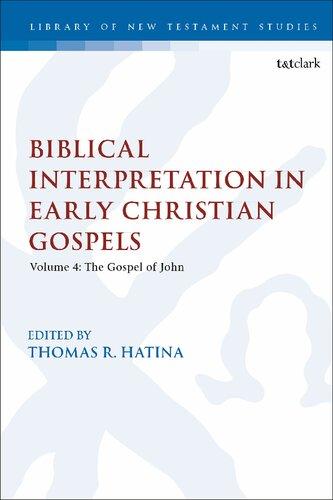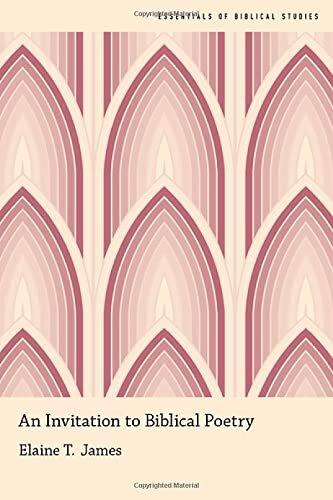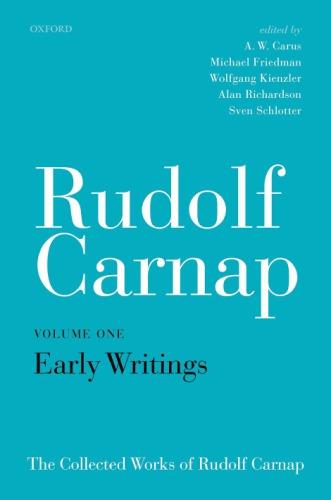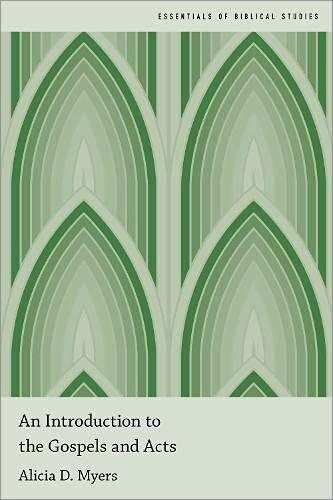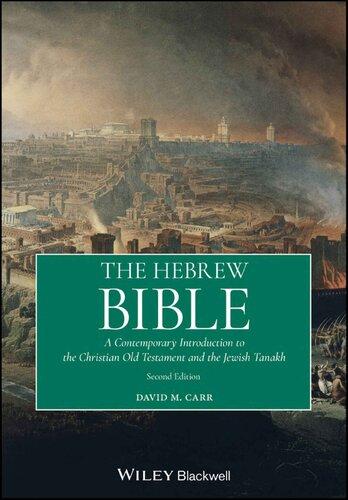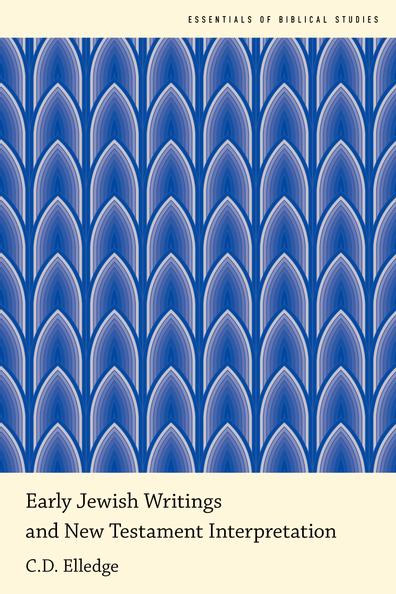1 Forms of Scripture in Early Judaism
A classic feature of many religions has been the role of authoritative writings, often called “scriptures.” Religions are adamant about the authority, wisdom, mystery, and beauty of their scriptures. Yet complex questions emerge when we ask what counts as “scripture” and how such writings emerged within the historical experiences of a religion. This is especially the case for Judaism and Christianity. Near the close of the first century ce, Judaism would preserve a collection of scriptural books known today as the Hebrew Bible. Another name for this collection is the Tanak, an acronym that includes three major divisions: the Torah, the Prophets, and Writings. It is also called Mikra (that which is read aloud, especially in the synagogue).
As for the Christian Bible, a more extended development transpired throughout the first four centuries of its emergence—and beyond. Christians would accept the writings of the Hebrew Bible as their Old Testament, preserving them in a different order and typically reading them in the Greek translation known as the Septuagint. Their Greek scriptures also contained additional writings not found in the Hebrew Bible. These included writings designated by later Christians as Apocrypha or Deuterocanonical Books. The collection, of course, further expanded to include the early church writings that formed the New Testament, which itself was attested in varied arrangement and content among the earliest surviving collections.
Early Judaism
An important feature of the formation of scriptures is that Jews and Christians would ultimately exclude a vast range of popular religious literature from their scriptural collections. Many of these books were
Early Jewish Writings and New Testament Interpretation. C.D. Elledge, Oxford University Press. © Oxford University Press 2023. DOI: 10.1093/oso/9780190274580.003.0001
originally composed during one of the most fascinating environments in the study of religions, a historical era sometimes called “Early Judaism” or “Ancient Judaism” (see Box 1.1). “Second Temple Judaism” further designates the Judaism that flourished from the Persian restoration of the Jerusalem temple (515 bce) until its destruction by the Romans (70 ce).
The geographical parameters of Early Judaism range beyond the ancestral homeland of Palestine to the diaspora communities that flourished in Babylonia, Egypt, Asia Minor, Greece, and Rome. Its historical parameters are understood differently by modern historians. Yet they commonly include the Hellenistic (332–63 bce) and Roman (63 bce) eras in the centuries prior to the reformulation of Jewish tradition achieved by early rabbis and codified in the Mishnah (ca. 200 ce). Prior to the full emergence of this “Rabbinic Judaism,” however, many colorful strands of religious belief and practice flowed through the Jewish community.
Box 1.1 Major Events in the History of Early Judaism
BCE (Before Common Era)
Alexander’s Conquests 334–323
Septuagintal Translation third century
Hellenistic Reform Movement 175
Maccabean Revolt 167–164
Hasmonean Dynasty ca. 140–63
Roman Rule in Palestine 63
Herod the Great 37–4
Roman Rule in Egypt 30
CE (Common Era)
Great Jewish Revolt 66–70
Diaspora Revolt 115–117
Bar-Kochba Revolt 132–135
The Mishnah ca. 200
The experiences of Early Judaism in the Hellenistic era reveal how Israel’s earlier traditions were creatively adapted to the seismic changes that Alexander’s conquests brought to the Near East (334–323 bce). The subsequent spread of Greek culture, or Hellenization, fractured the Jewish community internally, as conflicting factions pursued competing alternatives for how to live out the ancestral faith under Greek dominion. One of the most intense political expressions of these conflicts erupted in the Hellenistic Reform (175 bce), in which pro-Hellenistic Jews enacted cultural, religious, and legal reforms that endeavored to transform the city of Jerusalem into a Greek polis. They were supported in their radical initiatives by the Greek emperor Antiochus IV Epiphanes, infamous throughout subsequent Jewish tradition. In the Maccabean Revolt (167–164 bce), the Maccabean family fought to assert practices of Jewish religion threatened by the Reform, including circumcision, sabbath, and temple sacrifice. After their revolutionary triumph over Antiochus and his pro-Hellenistic partisans, the heirs of the Maccabees, the Hasmoneans, established a prosperous political dynasty in Jerusalem (ca. 140 bce). Hasmonean leadership, however, would only provoke intense sectarian opposition from other sectors of the Jewish community. It is within this environment that the first historical references to the three famous “sects” of ancient Judaism are to be found: the Pharisees, Sadducees, and Essenes (see Box 1.2).
Bringing an eventual end to the Hasmonean Dynasty, Rome experimented with varied strategies for governing ancient Palestine (63 bce). The most successful involved political friendship with King Herod the Great, whose lengthy reign (37–4 bce) secured Roman interests in the region, while promoting Jewish prosperity internationally. Herod’s leadership gloriously renovated the Jerusalem temple (20s bce), making it a renowned centerpiece of Jewish civilization. Yet this delicate pro-Roman/pro-Jewish alignment was defended with a bloody sword and proved difficult to maintain after Herod’s death.
As revolutionary factions gained momentum, three catastrophic revolts would contribute to the gradual demise of Early Judaism. The Great Jewish Revolt against Rome (66–70 ce) would see the destruction of the Jerusalem temple and the massive upheaval of earlier Palestinian society. Yet 70 ce was far from the end of Jewish nationalism and revolutionary fervor. After prolonged conflict in major
Box 1.2 The Three Jewish Sects
According to Josephus, three religious “classes” or “schools” “practice[d] philosophy” (War 2:119–66; Antiquities 18:11–25).
These included the Pharisees, Sadducees, and Essenes. Differences in theological beliefs and social organization distinguish the schools. The aristocratic Sadducees emphasize free will, deny rewards in the afterlife, and are contentious toward one another. Severe in matters of judgment, they abide only by the written Torah in their religious practice. Pharisees enjoy popular appeal and are renowned for their legal interpretation, which emphasizes certain “traditions from the fathers” not written within the Torah (Antiquities 13:296–97). Lenient in matters of judgment, they live simply, believe in an afterlife, and emphasize cooperation between free will and determinism. Essenes form an altogether distinct communal order in which they practice asceticism, adhering to deterministic beliefs and a positive view of the afterlife. Josephus’s accounts testify to how differing theologies and social behaviors characterized competing sectarian movements in Early Judaism.
urban environments, a Diaspora Revolt (115–117 ce) raged in North Africa, Cyprus, and Mesopotamia as Jewish revolutionaries destroyed pagan temples and massacred Greek populations. The unrelenting Roman response devastated many of the diaspora communities that flourished in these regions. The Bar-Kochba Revolt (132–135 ce) in Palestine waged another failed attempt at political liberation from Rome. These revolts intensively disrupted the social and religious structures that had characterized earlier Judaism.
Since the origins of Rabbinic Judaism and Christianity are to be found within this setting, Early Judaism may be regarded as among the most generative environments in the history of religions. Rabbinic Judaism was deeply informed by the religion of the Tannaim, sages who had been active before the temple’s destruction and offered leadership to the Jewish community in the desperate aftermath. Their interpretation of Israel’s law contributed to the advancement of rabbinic Halakhah. This totality of Jewish legal tradition included orally
transmitted sources later collected in the Mishnah and continuously deliberated throughout the Talmud. Early Jewish writings reveal a vast expanse of legal traditions that developed prior to the temple’s destruction, exhibiting both continuity and discord with the emerging rabbinic Halakhah. Such is also the case with the Aggadah, the nonlegal, moral, theological, narrative, and mystical traditions of Rabbinic Judaism.
Jesus and his earliest followers also lived within this environment. Within its first-century context, it is perhaps premature to use the term “Christianity” to describe the actual social setting of Jesus and his earliest followers, especially if we use that term to designate a distinct world religion. While Jesus and his earliest followers appear to have challenged existing beliefs and practices in Early Judaism, so did other movements within this era. Beyond the Tannaim and the nascent church, there flourished a variety of other competing religious currents that contended for their own interpretations of how to live out the ancestral faith amid the incessant tides of imperial rule.
The literature of Early Judaism has thus stood at the forefront of attempts to understand the gradual emergence of the church and Rabbinic Judaism from the multifaceted religious context that both shared. These shared origins have remained among the factors that have most persistently linked Judaism and Christianity as mutual heirs of a common religious heritage. While scholars once confidently asserted an intentional “parting of the ways” between Judaism and Christianity in the late first-century ce, the continuing study of Early Judaism offers a more problematic tale (Becker and Reed 2003). As Daniel Boyarin (1999, 5–6) observes, “Like many twins, Judaism and Christianity never quite formed entirely separate identities. Like closely related siblings, they rivaled each other, learned from each other, fought with each other, perhaps even sometimes loved each other.” Since Early Judaism supplied their originally shared, formative environment, the literature composed in this era preserves crucial evidence for understanding the later development and tensive relationships between the two religions throughout their subsequent histories.
This age was also crucial to the latest stages of the development of the Hebrew Bible itself. Late compositions like Daniel 7–12 and many of the Psalms were composed in this era. Many books were continuously
edited throughout this age, as they began to develop together into larger scriptural collections. Thus, Early Judaism was not merely a later heir but was an active contributor to the literature of the Hebrew Bible. Jewish scribes, visionaries, sages, historians, poets, and philosophers also composed a vast amount of fascinating new literature throughout the Hellenistic and Roman eras that did not ultimately appear in the later Hebrew canon. These diverse writings provide modern scholars some of the best available insights into one of history’s most fertile religious contexts. The purpose of the present volume is to introduce a select number of important genres and collections of these writings and to discuss their implications for interpreting aspects of New Testament literature and Christian origins.
Canon and Noncanonical Literature
From a contemporary perspective, many of these writings may be categorized in some sense as “noncanonical.” This categorization, of course, assumes the formation of a biblical canon or exclusive collection of scriptural books. The term “canon” derives from a Greek word denoting a straight rod or beam utilized to measure or maintain the structure of other materials. A kanōn might align the intricate threads of a woven tapestry or guide the precise measurements of a skilled mason or carpenter. As applied to intellectual culture, the ideal models for literature, philosophy, or architecture might be designated as kanones. Christians would apply this term to the collection of their scriptural texts. Amid stormy controversies, these writings provided an authoritative guide, metric, or model for distinguishing between truth and falsehood, worship and abomination.
An important feature of canon in Judaism and Christianity is that their collections ultimately became exclusive. Some writings were included, while others, however popular, were omitted. The scriptural canons of Jews and Christians also became closed, so that no new writings were added. For the Hebrew Bible, it appears that such an exclusive scriptural collection first emerged among early rabbinic leaders near the end of the first century ce, although some scholars still argue for an earlier or later context. For the Christian Bible, the closure of the
canonical process transpired through a much later development, first traceable to the fourth century ce. Moreover, the canonical process transpired differently among global populations within Christianity, leading to differences among the canons of Catholic, Protestant, Eastern Orthodox, and Oriental Orthodox churches. Since the closure of the canonical process began relatively late in the histories of Judaism and Christianity, what “scripture” may have meant in earlier settings remains a more open and enticing question.
Canons as Inclusive
One way to appreciate the situation is to recognize two features of canon. As Lee McDonald (2012) advises, one feature of canon positively asserts that a writing represents an authoritative scriptural document. This emergent sense of canon came relatively earlier. The Torah or Pentateuch, the first five books of the Hebrew Bible, received strong, even essential acceptance throughout much of Judaism in the Hellenistic and Roman eras, even among communities that were otherwise at odds. The Prophets are continuously utilized as religious authorities, even if questions persist about what texts were referenced by this categorical term. Passages of Psalms are also frequently referenced in varied ways in the literature of Early Judaism and the nascent church. One may recognize an early, formative sense of canon among the Dead Sea Scrolls, an early Jewish literary collection from Palestine. The scrolls contain manuscripts from the Hellenistic era up until the Great Jewish Revolt. Approximately 25 percent of the scrolls comprise copies of all the books found in the later Hebrew Bible, with the possible exception of Esther. They attest numerous copies of each of the books of the Torah, with Deuteronomy registering the most, at twenty-nine. Each of the Prophetic books is found in multiple copies, with Isaiah registering the largest number, at twenty-one. While their numbers are often fewer, most of the texts featured as Writings in the later Hebrew Bible appear. This includes thirty-six manuscripts that preserve portions of Psalms in varied compositions.
New Testament writings likewise cite every book of the Torah as scripture. Deuteronomy is most frequently quoted, with over forty
citations. Most of the Prophetic books are cited, with Isaiah registering over sixty citations. Among the Writings of the Hebrew Bible, passages of Psalms are quoted over seventy times; Job, Proverbs, and Daniel are also cited. Even conceding that quotation alone does not reveal a writing’s canonical status, one finds the broad contours of the eventual books of the Hebrew Bible throughout the pages of the New Testament. Testimonies from Ben Sira (early second century bce), Josephus, and 4 Ezra (late first century ce) share the view that Law and Prophets constituted essential categories of scripture. Ben Sira’s Prologue further references “other books that followed them”; Josephus references “four” additional books containing “hymns to God and instructions for human life” (Apion 1:38–40; cf. Luke 24:44). These sources, however, do not identify specific books or their sequential arrangement. Josephus enumerates the total collection of scriptural books at twentytwo (five law + thirteen prophets + four hymns/instructions); 4 Ezra identifies twenty-four public books to be read by all people (14:45). These enumerations appear to converge in large measure with the eventual twenty-four books of the Hebrew Bible.
Even so, as Timothy Lim (2013) and other scholars advise, the 22/24 book enumeration may describe the scriptural collection of the particular Pharisaic-rabbinic movement that would hold increasing sway in the decades following the temple’s destruction. The scriptural collections of other movements may well have remained more, or less, expansive.
Canons as Exclusive
Even as canons positively include authoritative scriptural books, they ultimately possesses a delimiting and negative characteristic. Canons became exclusive collections with boundaries. Thus, many popular, even authoritative writings were ultimately excluded. Indeed, such selectivity would have been meaningful and necessary only amid a much larger array of popular religious literature that held value within the Jewish and Christian communities. McDonald (2012) counsels that this exclusive feature of canon emerged late and that it is anachronistic to assume that it prevailed in the centuries prior to the closure of the canonical process. There is sufficient evidence to believe that in Early Judaism
a more expansive sense of authoritative texts prevailed, one that included writings that would not appear within the later Hebrew Bible.
The Dead Sea Scrolls and New Testament again provide illuminating instances. Writings later known as Jubilees and portions of 1 Enoch appear to have held some type of religious authority among the authors of the scrolls. Manuscripts of Jubilees, in fact, register nearly as many copies as Genesis (fifteen to sixteen), a number surpassed only by Deuteronomy, Isaiah, Exodus, and portions of Psalms. The New Testament also cites or alludes to texts that ultimately did not feature in the Hebrew Bible. Among the clearest examples, Jude explicitly cites a portion of 1 Enoch as an authoritative prophecy that foretells the demise of the wicked and the final triumph of God’s justice (v14).
Most striking in this regard is a passage from 4 Ezra, where “the twenty-four books” of the Hebrew Bible comprise a public declaration for the masses. Yet for “the wise among your people” remain “seventy [books] that were written last. . . . For in them is the spring of understanding, the fountain of wisdom, and the river of knowledge” (14:45–47).1 4 Ezra may suggest that the fullest wisdom was to be found beyond the writings of the Hebrew Bible alone, within seventy divinely revealed, esoteric books, in which the most profound waters of understanding flowed.
In yet a different case, the Prologue to Ben Sira presents the book as an essential complement to “the law,” “prophets,” and “other books.” It offers functional training in the written and spoken word, skills essential for keeping the law and advancing its fame among “outsiders.” In this instance, existing scriptural books may yet be wedded to secondary, supportive works, like Ben Sira, that refine their interpretation and application to the problems of daily life. The Prologue recommends awareness that canons may contain internal gradations of authority that complement and support one another.
Studying the so-called noncanonical literature of Early Judaism today thus requires a kind of dual vision. Even as modern readers study these documents centuries after the closure of the canonical process, we must also acknowledge that they were originally composed and utilized within a range of diverse communities that held their own particular assumptions about what constituted scripture. Since the authors of the New Testament also lived in an era prior to the closure
of the canonical process, their own theologies and arts of expression may have been meaningfully informed by traditions preserved within noncanonical literature.
Apocrypha, or Deuterocanonical Books
One later category superimposed upon a collection of early Jewish writings is that of the Old Testament Apocrypha. These works were written within the Hellenistic and Roman eras, in both Palestine and the Diaspora. Several were originally composed in Hebrew or Aramaic (Tobit, Judith, 1 Maccabees, Sirach, Baruch). Yet after their composition, they came to be known primarily in Greek translation, as they circulated together with the Septuagint.
As Jews (and, later, Protestants) established their scriptures upon Hebrew manuscripts rather than the Septuagint, they excluded these Greek writings, forming a more selective scriptural canon. Roman Catholic and Orthodox churches, however, included these books, incorporating a wider range of the Jewish traditions of antiquity among their scriptures. Catholics and Orthodox share the inclusion of Tobit, Judith, Baruch, Letter of Jeremiah, Sirach, Wisdom of Solomon, 1–2 Maccabees, plus additions to Daniel and Esther. Greek Orthodox further include 3 Maccabees, Psalm 151, and 1 Esdras, with Prayer of Manasseh and 4 Maccabees often presented in an appendix. In its own apocryphal appendix, the Latin Vulgate Bible includes the Prayer of Manasseh, 3 Esdras (= Greek 1 Esdras), as well as the apocalypse of Ezra (known in other contexts as 2 Esdras, 4 Ezra).
The term “Apocrypha,” meaning “hidden away,” “obscured,” or “concealed,” is ambiguous at best. More pejoratively, it may convey that these writings are of uncertain origin and meaning. More positively, it may imply that they are reserved for those of sufficient maturity to interpret them properly (cf. 4 Ezra 14:46–47). Another description applied by Catholics in the 1500s and further utilized in Orthodox circles is that they are Deuterocanonical Books: scriptural works deemed canonical secondarily or later in history than other books (see Box 1.3).
Orthodox Christians have also referred to them as Anagignoskomena, literature that is “to be read” by those seeking
Box 1.3 The Term “Deuterocanon”
Sixtus of Siena (1520–1569) described “Deuterocanonical” writings as those that came into later historical recognition by the church, after the time of the apostles. Deuterocanonical literature encompassed the Apocrypha, as well as the New Testament books of Hebrews, James, Second Peter, Second and Third John, Jude, and Revelation. Sixtus even included passages not attested in many ancient manuscripts (the ending of Mark, Luke 22:43–44, John 8:1–11).
Box 1.4 Luther on the Apocrypha
In prefaces to the Apocrypha, Martin Luther (1483–1546) offers an individualized critical valuation of each book. Judith “would be a noble and fine book, and should properly be in the Bible,” were it not for its purely fictional literary character. Even so, it remains “a fine, good, holy, useful book,” one that “preaches” through dramatic elements (Luther’s Works 35:337–53). Similar praise attends Wisdom of Solomon, Tobit, Ben Sira, 1 Maccabees. Other works, such as Baruch, however, fare worse, containing “nothing that one could not find better in Aesop.”
instruction (Athanasius, Festal Letter 39) (Gallagher and Meade 2017). In early Protestant Bibles, these writings were separated from the Old Testament and published in a special section (see Box 1.4). Catholics and Orthodox, however, integrate most Deuterocanonical works among the Old Testament writings themselves.
Narratives
Several works provide narrative renditions of the historical experiences of the Jewish people. First Esdras reviews historical episodes that span the reign of Josiah, the Babylonian conquest,
and the restoration of Judah under the Persians. The book of Baruch recounts the penitential prayers and wise admonitions of this faithful scribe of the prophet Jeremiah. First Maccabees narrates a patriotic rendition of the Maccabean Revolt and the gradual emergence of the Hasmonean Dynasty. Its pro-Hasmonean tendencies hail the Maccabean family as saviors and liberators of Judaism. Second Maccabees offers a different portrait of these events that highlights festival observance in the Jerusalem temple, the piety of Judah the Maccabee, and the Jewish martyrs’ faith in resurrection. Fourth Maccabees takes a more philosophical vantage of the Jewish martyrs interpreting their heroism as the triumph of godly “reason” over the “passions.” Unrelated to these events, 3 Maccabees concerns an imagined threat to Judaism posed by the Ptolemaic Empire in Egypt.
Tobit and Judith, two masterpieces of storytelling, promote serious religious values through the suspenseful adventures of their protagonists. Tobit recounts the story of a righteous man taken into exile in Nineveh after the fall of Israel to Assyria. Through the faithfulness of Tobit’s family, the author portrays an ideal picture of Jewish piety regarding sacrifice, prayer, burial, almsgiving, marriage, and fidelity to the temple. Judith transpires within a fanciful historical setting that was nevertheless familiar to Jewish experiences in antiquity. Threatened with extermination by the Assyrians, Judith, a courageous widow, saves her people and the temple through an artful interplay of beauty, wisdom, and faithfulness to Jewish law. Poetic hymns and prayers accent both works, offering models of devotional piety within the drama of trial and deliverance.
Additions
Several Additions supply further episodes to the Greek versions of Esther and Daniel (Susannah, Prayer of Azariah and Song of the Three Young Men, Bel and the Dragon). Such additions reveal an interpretive culture in which Jews read these popular books with a sense of inquiry and imagination, contributing expanded content where they believed it was warranted.
Wisdom and Apocalyptic Literature
Finally, wisdom and apocalyptic compositions appear in the collection. The Wisdom of Jesus ben Sira and the Wisdom of Solomon provide sapiential compositions that may be compared with the socalled wisdom literature of the Hebrew Bible (e.g., Job, Proverbs, Ecclesiastes). The Latin Vulgate further includes the apocalypse of 2 Esdras (known elsewhere among the Pseudepigrapha as 4 Ezra), which recounts Ezra’s apocalyptic visions after the fall of Jerusalem to Babylon.
Pseudepigrapha
The Old Testament Pseudepigrapha comprise writings that Christians later judged to be “falsely ascribed” to the authorship of ancient worthies like Enoch, Abraham, Moses, David, or Solomon. Many of these writings utilize the literary art of pseudonymity. The authors of pseudonymous works did not write in their own names, but attributed their compositions to exemplary figures of the sacred past. Through this powerful literary device, they fortified the authority of their writings, as though the stream of divine revelation in earlier contexts flowed into their own, later times. How the ancients heard the scriptural voices of “Moses,” “Abraham,” or “David” may thus have encompassed an expansive range of traditions beyond the writings of the Hebrew Bible alone.
Pseudonymous authors invited meaningful comparisons between the world of the past and the pressing issues of their own times. Even pseudepigrapha that do not utilize pseudonymous authorship frequently craft their compositions within earlier settings that become paradigmatic for interpreting their contemporary circumstances and promoting their religious claims.
The writings collected as pseudepigrapha have varied for centuries, a process initiated by J. A. Fabricius’s (1713, 1723) modern collection of over three hundred writings. The early twentieth-century collection by E. Kautzsch (1900) included twelve works, and that of R. H. Charles (1913), seventeen. The prevalent contemporary collection by
J. H. Charlesworth (1983–85) amassed over sixty writings. A team of scholars continues to supplement and expand earlier collections (Bauckham, Davila, and Panayotov 2013–). Dates of authorship range widely among the works collected by Charlesworth, with the earliest (Ahiqar) dating prior to 500 bce and the latest (the Apocalypse of Daniel) to the ninth century ce.
Many writings are not fully preserved in their original language of composition but survive in Greek, Latin, Syriac, Ethiopic, Coptic, Arabic, Armenian, and Slavonic translations. For this reason, scholars continue to make important discoveries in the language, rhetoric, and theology of these writings by studying the fullest range of manuscript witnesses.
In the pseudepigrapha, one witnesses a larger historical process of transmission in which many popular writings within ancient Judaism came to be translated, edited, and reinterpreted in the early church, thus playing a formative role in the development of Christian thought (Stone 2011). Given the complexity of this process, it is not always immediately clear whether one is reading Jewish, Christian, or even pagan literature. Presuppositions about the lines defining Jewish and Christian traditions in antiquity also strongly influence how one addresses this ongoing interpretive problem.
Some scholars emphasize that the Pseudepigrapha ultimately represent a Christian collection, since it was not Judaism but the church that was primarily responsible for their transmission in later antiquity. Indeed, the church is likely to have preserved those earlier writings most conducive to its own religious interests (Bauckham, Davila, and Panayotov 2013–). Robert Kraft (1994, 55–56) thus advises, “it is premature to distill from these writings information about pre-rabbinic Judaism before they are thoroughly examined for their significance as witnesses to Christian interest” (see also Himmelfarb 2018). On the other hand, transmission by the church alone does not obviate the possibility of the originally Jewish context of individual pseudepigrapha, any more than it does for writings such as 1 Maccabees, Ben Sira, Tobit, or Judith. Scholars today thus examine each of these writings on an individual basis according to historical criteria to determine its particular characteristics (Davila 2005; Collins 2022).
Such a methodology only further deepens appreciation for the vast internal complexity of this collection. Versions of individual writings were composed prior to Christianity and represent originally Jewish compositions, like portions of 1 Enoch, Jubilees, and the Psalms of Solomon. Other writings, like the Odes of Solomon, were probably composed by early “Jewish-Christians” late in the first century. Still others, like the Testaments of the Twelve Patriarchs and Sibylline Oracles, may contain originally Jewish compositions that were also reworked by Christian scribes. Portions of the Sibylline Oracles, as well as Ahiqar, appear to have been neither Jewish nor Christian. The religious origins of writings like Joseph and Aseneth remain contested.
The categorization “pseudepigrapha” is modern, Western, perhaps even condescending (Reed 2009). Some scholars prefer to describe this literature as simply “beyond the canon.” Yet this designation also has limitations, since many of these writings were composed prior the closure of the canonical process. The question thus remains as to how the ancients viewed these writings. The strong attestation of Jubilees and portions of 1 Enoch among the Dead Sea Scrolls demonstrates that some of these writings possessed significant authority in sectors of Early Judaism prior to the origins of Christianity. We have also seen that a passage found in 1 Enoch is quoted as prophecy in the book of Jude. They did not, however, ultimately feature in the Jewish canon of scripture. Nor did the majority of these books appear in later Christian canons.
Yet significant exceptions appear within particular church collections. Fourth Maccabees, sometimes numbered among the Pseudepigrapha, appears within Codex Sinaiticus (fourth century ce) and other collections.2 The Psalms of Solomon concludes the table of contents in Codex Alexandrinus (fifth century ce), separated by a space. The apocalypse of 4 Ezra appears in Syriac Codex Ambrosianus (B), the apocryphal appendix of the Latin Vulgate, and Gennady’s Old Church Slavonic Bible. The apocalypse of 2 Baruch registers within Codex Ambrosianus (B) as well. Jubilees (Kufale), (First) Enoch, and 4 Ezra (Izra Sutuel) number among the Old Testament writings of the Ethiopian Orthodox (Tewahedo) Church.
Since the Pseudepigrapha represent an eclectic collection, it is challenging to classify their contents. In the Charlesworth edition, the
following literary categories are utilized: (1) Apocalyptic Literature (and related works); (2) Testaments; (3) Expansions of the “Old Testament” and Legends; (4) Wisdom and Philosophical Literature; (5) Prayers, Psalms, and Odes; (6) Fragments of Lost Works. Even so, these headings merely represent “broadly conceived literary types. . . . Any system for ordering these documents has weaknesses” (Charlesworth 1983–85, 1:xvi). Other editions have classified their contents according to the scriptural ancestor whose story provides the literary setting for each work (e.g., “Adam,” “Moses,” “Solomon”).
Apocalypses and Related Works
Literary apocalypses, like 1 Enoch, 4 Ezra, 2 Baruch, and Apocalypse of Abraham, feature prominently among the Pseudepigrapha. These originally Jewish apocalypses emerge from the Hellenistic era (portions of 1 Enoch), as well as the aftermath of the Great Revolt against Rome (4 Ezra, 2 Baruch, Apocalypse of Abraham). They offer immense comparative value for understanding the apocalyptic rhetoric and theology of the biblical apocalypses, Daniel and Revelation. Second Enoch represents an important work for understanding how apocalypticism further contributed to Jewish and Christian mysticism. Within a broader range of revelatory texts, the Sibylline Oracles record the supposed oracles of a sibyl, one of the legendary prophetesses of antiquity. The oracles often preserve pagan and Jewish renditions of sibylline lore that were later edited by Christians. Later Christian apocalypses, like the Greek Apocalypse of Daniel, illustrate that the apocalyptic tradition did not perish from the church but persisted well beyond its first century.
Testaments
Testaments portray the final admonitions of illustrious ancestors to future generations, often their own descendants or successors, just prior to their deaths. These precious “last words” form a rhetorical vehicle for addressing later audiences. The Testaments of the Twelve Patriarchs
offer the final admonitions of each of the Israelite ancestors. Their speeches draw upon moral lessons exemplified within the ancestors’ scriptural biographies (Gen 29–50). The Testament of Job reflects on Job’s experience of suffering just prior to his death, providing a fascinating reinterpretation of the scriptural book. Testaments also frequently forecast the calamities and eschatological redemption that will come upon future generations.
Expansions and Legends
Several narrative writings retell, expand, and reimagine earlier scriptural and legendary narratives. In the retelling of earlier traditions, authors subtly—and sometimes drastically—interweave their own interpretive agendas. Two prominent examples are the book of Jubilees and the book of Biblical Antiquities. Such narratives are invaluable resources for understanding the interpretive traditions that surrounded scriptural writings in Early Judaism (see Chapter 4).
The Letter of Aristeas advances an idealized, apologetic narrative that recounts the Septuagint translation in Ptolemaic Egypt. The name “Septuagint” derives from the legend of the seventy-two sages who translated their scriptures into Greek in seventy-two days (septuaginta = seventy, LXX), under the sponsorship of King Ptolemy II Philadelphus (d. 246 bce). The sages not only produce an impeccable, harmonious translation; they further counsel the king in a philosophical symposium on the virtues of wise governance. The narrative legitimates the Greek scriptures of Egyptian Judaism, as well as the flourishing of Jewish rights within the Ptolemaic Empire.
Joseph and Aseneth recounts how the Egyptian “daughter of Potiphera, priest of On,” came to marry Joseph (Gen 41:45, 50). The author’s entertaining romance wishes, above all, to explain the patriarch’s dubious intermarriage with a non-Israelite. As Aseneth turns away from Egyptian deities, she converts to the worship of Israel’s God, as though she has passed from death to life, from darkness into light. After their marriage, Aseneth plays a wise, judicious role within Joseph’s administration in Egypt.
Wisdom and Philosophy
The Pseudepigrapha also contain explorations of wisdom. In the case of Pseudo-Phocylides’s Sentences, a Jewish author pseudonymously ascribes his own poetic instructions not to Israel’s ancestors but to the celebrated Greek sage Phocylides of Miletus. In so doing, the unknown author, who probably wrote in the first century ce, makes the venerable Greek sage a spokesperson for Jewish ethics—even imitating his poetic maxims in well-crafted Greek hexameters. Pseudo-Phocylides paraphrases the Decalogue (or Ten Commandments), offering his own synthesis of Jewish and Greek morality on poverty and wealth, sexual behavior, and care for the dead.
Prayers, Psalms, Odes
Prayers and psalms were a crucial feature of early Jewish piety and are well represented among the Pseudepigrapha. In the Psalms of Solomon, a Jewish author imitates the styles of the book of Psalms, producing eighteen poems that reflect upon the aftermath of Rome’s advent in Palestine and the collapse of the Hasmonean Dynasty. The perplexity of the psalmist ultimately gives way to hope in God’s own kingship, which will one day be restored through a Davidic messiah (chs. 17–18). The Odes of Solomon probably arose from JewishChristian circles late in the first century. Utilizing daring imagery, the Odes explore the intimate, mystical relationship between believers and the Lord.
Fragments
Finally, the Pseudepigrapha include fragments of writings that have survived antiquity only as quotations within other works. Many of these illustrate the attempt to render Jewish tradition in the literary genres of Greek antiquity, including history, epic, and tragedy. Other fragments defend the historical antiquity of the Jews and their cultural contributions to the Hellenistic world. Such literary and apologetic
strategies deeply informed the works of Philo and Josephus, as well as later Christian apologists.
Dead Sea Scrolls
Until the middle of the twentieth century, interpretations of Early Judaism depended heavily upon Deuterocanonical Books, Pseudepigrapha, Philo, Josephus, the New Testament, and rabbinic traditions. Yet in 1947 the discovery of the Dead Sea Scrolls unveiled another vast collection through which to understand this crucial era. The scrolls preserve manuscripts in Hebrew, Aramaic, and Greek that range from the third century bce to ca. 68 ce. We have already observed how the scrolls shed important light on questions of scripture and canon. Their discovery also unveiled previously unknown writings that must now be factored into discussions of early Jewish religion. The movement that preserved the scrolls opposed the Jerusalem priesthood, as well as the Pharisees. Against these two competing movements, they advanced their own interpretation of Jewish law, which they believed to have been uniquely revealed to their own leaders in an age of spiritual deception. The surprising discovery of such adamant claims forever challenged assumptions that Pharisaic or priestly leaders held sway over Early Judaism and advanced continuing awareness of the religious diversity of this era.
Philo and Josephus
Finally, two individual authors, Philo and Josephus, each composed prolific literary works that open additional vistas into Early Judaism. Philo of Alexandria (ca. 20 bce–ca. 50 ce) composed some of the most sophisticated exegetical works in Western history, achieving his own distinct synthesis of scriptural tradition and philosophy. The works of the historian Flavius Josephus (37–ca. 100 ce) provide essential evidence for understanding the historical, religious, and political environments of Early Judaism. While there are important differences between them, both wrote in Greek and self-consciously interacted
